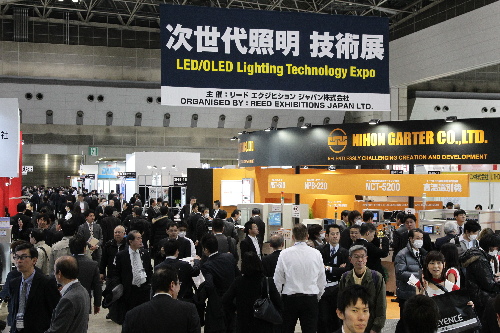
Whether it is the level of technological development or the scale of application, the Japanese LED lighting industry is at the forefront of the world. In 2013, the LED lighting penetration rate in the Japanese market broke through 50% in the world. According to the design of the Japanese government, the penetration rate of LED lighting shipments in the country will reach 100% in 2020, far higher than the global proportion of about 70%, and the penetration rate will reach 50%. In other words, five years later, of the nearly 1 billion lamps in the Japanese lighting market, 500 million will be replaced with LED lighting. Such a huge market has attracted the attention of global LED companies, and Chinese companies are doing their part. At Lighting Japan 2015, the number of Chinese exhibition areas has increased from three to four last year, and the number of companies has increased to 60.
“There are many viewers, but our booth is not in the interest.†Among the dozens of Chinese companies exhibiting, most of them have gained a lot, but there have also been dissatisfaction. Why is this happening?
Unlike the domestic market, the Japanese LED lighting market has entered a mature stage. As a country with relatively scarce energy sources, the nuclear accident in Fukushima, Japan, has exacerbated the seriousness of this problem. The government's subsidies and incentive policies, LED companies spare no effort to publicize, and the people's demand for electricity prices to increase electricity prices have really stimulated the explosive growth of alternative home lighting products such as bulbs and ceiling lamps. It seems that the growth of this market has slowed down and will reach saturation within two years. Sure enough, the reporter found that this exhibitor, which has few audiences, is exhibiting these alternative products that are saturated.
In contrast, Japanese exhibitors, starting with the characteristics and advantages of LED itself, set an example for the industry in two aspects. On the one hand, while digging deep into the potential of LED lighting technology, they are still working hard on product design. The organizer has specially developed an exhibition area for high-brightness technology, and high-power products for potential markets such as commercial lighting, office lighting and factory lighting have been sought after by buyers. Combined with new materials, all kinds of unique new style lamps not only reflect the designer's understanding of LED characteristics, but also earn a lot of attention.
On the other hand, they play the unique advantage of LED lighting and open up new application areas. In the lighting control exhibition area, buyers of intelligent lighting solutions are in constant stream. New products used in the agricultural sector and in the field of medical beauty have also attracted a large number of visitors.
We may wish to see the leading Japanese market as the epitome of the future global market. From the experience of the Japanese market, it took only two years for the penetration rate of LED lighting to increase from 20% to 50%. After that, if it is still limited to the replacement of traditional light sources, enterprises will have no room for further development. Therefore, domestic enterprises should change their thinking as soon as possible, step out of the horns of alternative design, and spend more thoughts on better playing the characteristics of LEDs.

In most cases, today you're better off using rechargeable batteries over disposable ones. ... And you wouldn't lose much performance: The best rechargeables can power your devices on a single charge for just as long as most high-quality single-use batteries can, but at a fraction of the cost over time.
Proper care and maintenance will prolong the life of any product, including your rechargeable batteries. With appropriate care and use, you should expect 2-7 years from most rechargeable batteries. Rechargeable cordless phone batteries can last 1-2 years with the right use and care.
Rechargeable Battery,Ups Inverter Battery,Rechargable Battries,Rechargeable 900Mah 3.7V Lithium
Shenzhen Glida Electronics Co., Ltd. , https://www.szglida.com